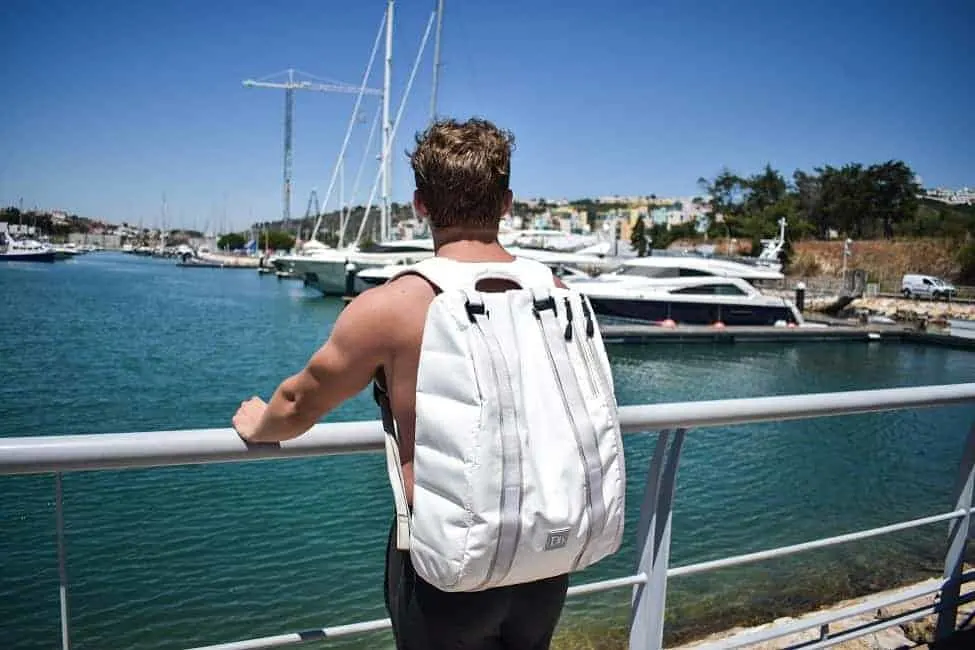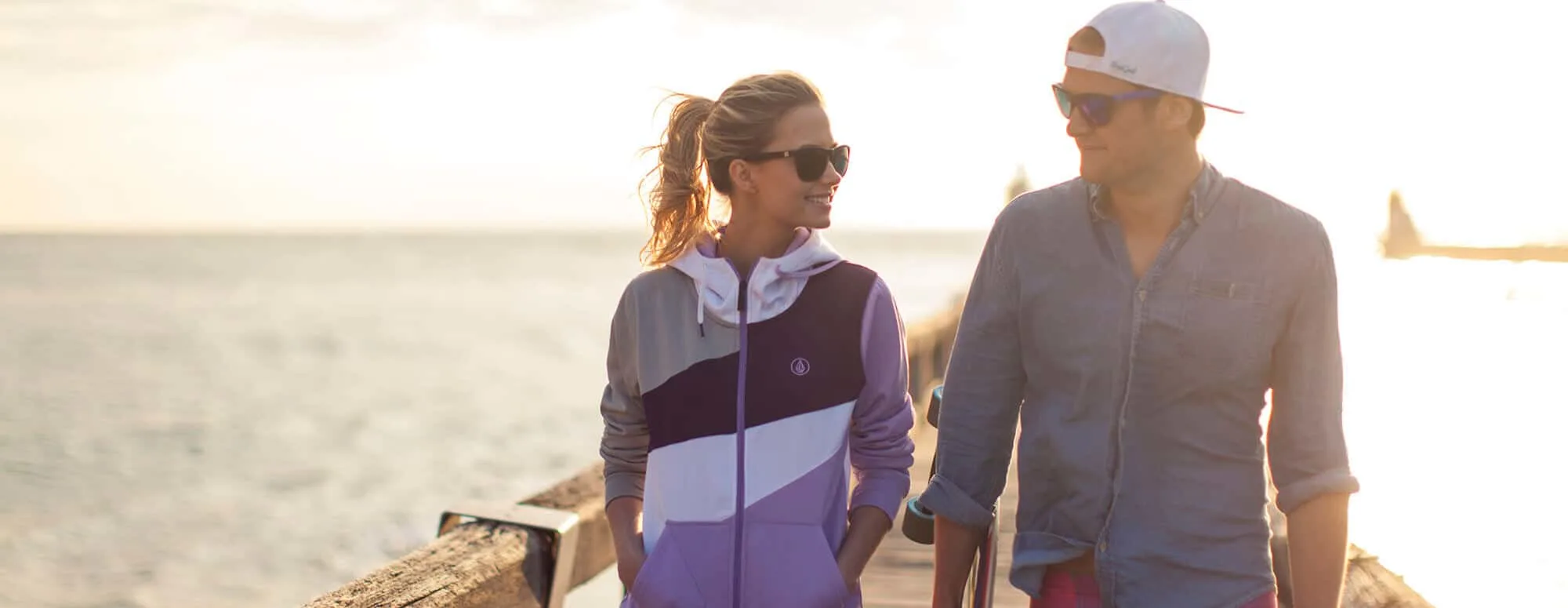WHAT TO PACK FOR A SAILING TRIP
Knowing what to pack for a sailing trip can be challenging and with space at a premium it’s critical to make every item count.
Having sailed 13,000 miles from Canada to Mexico to the South Pacific I’ve spent a lot of time experimenting with different gear and equipment at sea.
So, when my mother asked me for advice on packing her bag for her upcoming trip as crew on a World ARC boat, I was excited to draw up the perfect offshore sailing packing list.
The goal? To get everything you need for a sailing trip into one 130 L duffel bag.
I’ve explained the rationale for each item in detail below, but if you’re just looking for a quick checklist you can scroll to the bottom of this post where I’ve included an offshore sailing packing list.
Note: this also works as a sailing holiday packing list, you may just want to disregard a couple of the more technical items like the Personal Locator Beacon (PLB).
3 RULES FOR PACKING FOR A SAILING TRIP
(1) Go minimal
(2) Buy high-quality equipment
(3) Test your gear at home before leaving
CAN’T I JUST BUY IT WHEN I GET THERE?
It’s easy to over-pack because of a fear you won’t be able to find certain items in another country but you can easily find basic consumables:
- Ablutions (e.g., toothpaste, soap, deodorant,sunscreen)
- Basic clothing (t-shirts, ball caps)
You may not find your favorite brand but you will find the basics almost everywhere you go.
In remote locations, it’s harder to find and more expensive to acquire:
- Sailing gear and electronics (e.g., satellite communicator)
- Personal electronics—buy that new phone or camera before you leave!
- Sailing clothing and PPE (e.g, inflatable life jacket canisters)
- Specialty food items (e.g., tofu, your favorite fancy energy bar)
- Specialty skincare and cosmetics (e.g., beard oil, mineral sunscreen)
- Sporting equipment (e.g., snorkeling, diving, kiteboarding, spearfishing)
Can’t I just shop online?
It’s hard to shop online on a boat because:
- It can be hard to find internet
- You’re always on the move and itineraries can change due to weather, making it hard to pick up items.
Your best bet is to buy high-quality sailing gear and electronics that will last the duration of your trip.
THE ULTIMATE SAILING PACKING LIST
Please note that this post contains affiliate links.
Luggage and bags
Travel bag
If you’re crewing on a boat the captain will likely tell you how much luggage you’re allowed to bring on board.
In terms of a bag, you’re looking for something that is soft and can be easily stashed under a bunk or packed down when not in use.
Roller suitcases are clunky and awkward on a boat. If you have to have wheels then opt for a roller duffel bag. Backpacks are also an option but you’ll likely be able to fit more in a duffel.
Fun aside: we once had a crew member who strapped his duffel to a skateboard. He could roll his luggage and had a means of transportation when he was onshore.
If there aren’t sufficient lockers on the boat, you may have to store your clothes in your bag. If you opt for a backpack, choose one with zips down the front (not top loading).
Travel organizer packing cubes are very useful and will keep your bag organized.
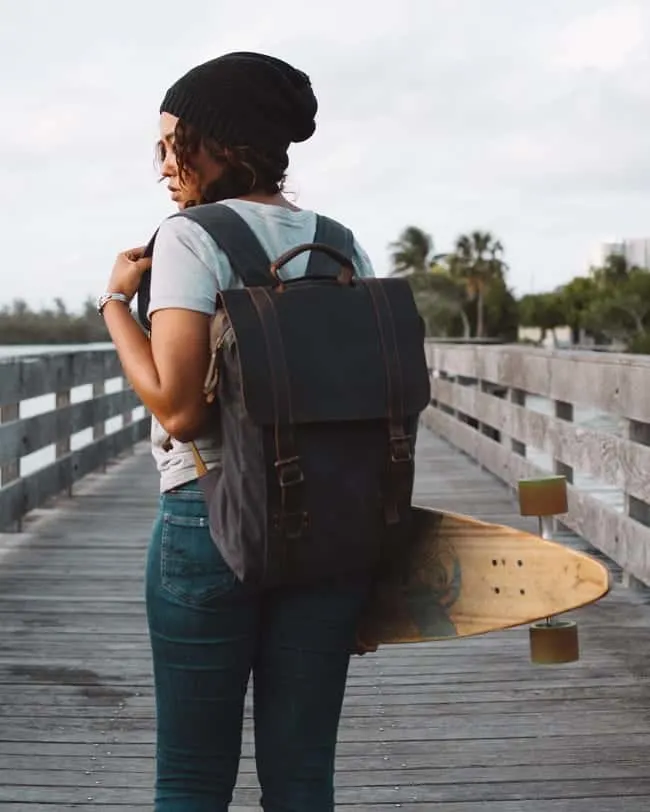
A day bag
A good day bag is an important piece of gear. If you’re at anchor, you’ll be traveling to shore in a dinghy.
Most captains prefer to limit the number of trips back and forth in the dinghy, so you may find yourself spending the whole day ashore. Therefore, it’s important to have a bag that will accommodate everything you might like to carry for the day:
- Towel
- Phone
- Sunscreen
- A packed lunch
- Water bottle
- Change of clothes
- Collapsible shopping bag
- Raincoat
Do a trial pack before you leave on your trip, to ensure everything fits in your day bag.
It’s also important to keep your gear dry in the dinghy. I love this dry bag backpack from Mustang Survival.
If you prefer to carry a non-waterproof bag, consider buying a packable dry bag that you can use to protect your day bag while traveling in the dinghy.
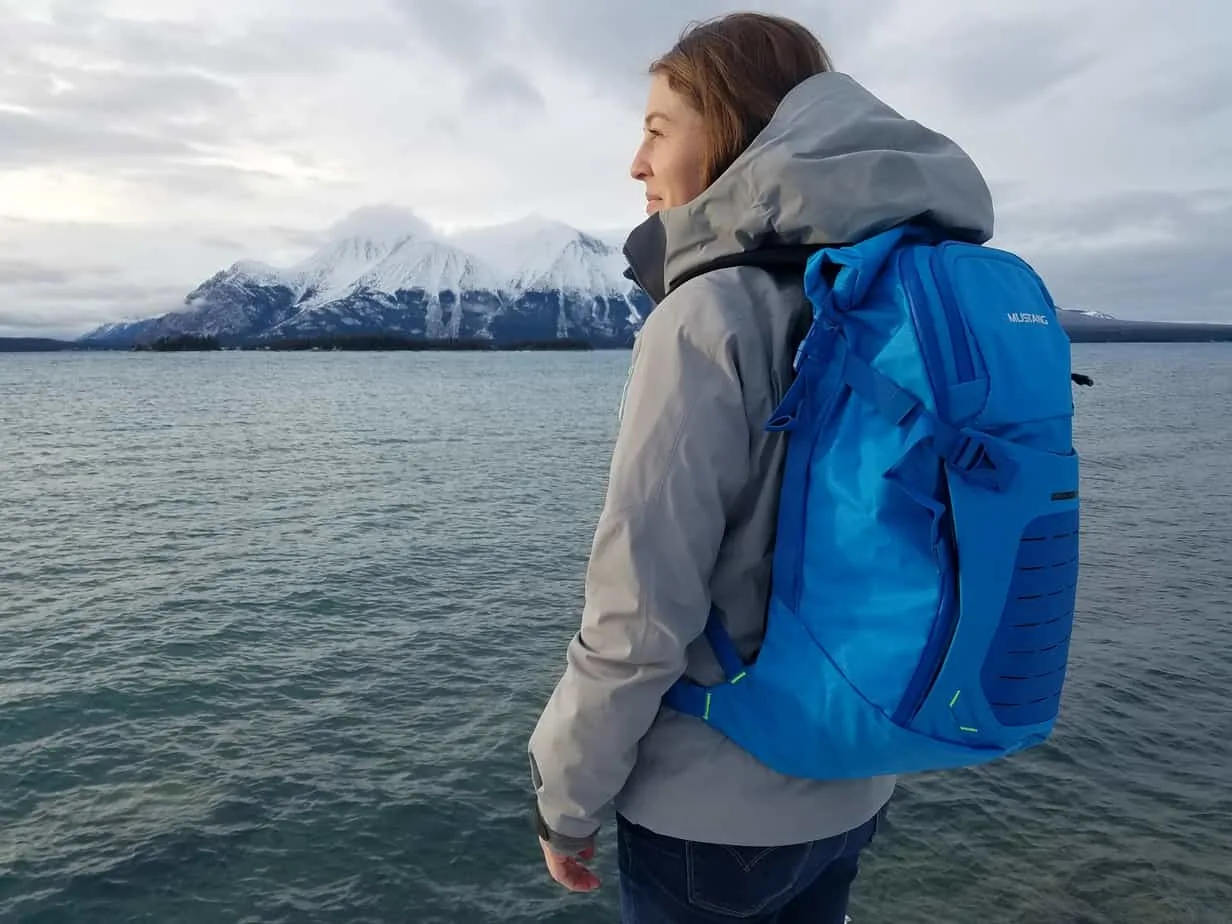
A dry bag
Always bring a dry bag (or two) on a sailing trip.
It doesn’t hurt to store things like laptops and electronics in dry bags, even when they’re tucked away in your bunk. On a boat, you never know when a hatch will be left open or a glass of water will go flying.
Sailing & personal protective equipment
PFD, harness, tether
Ask the captain if you will be provided with a life jacket, harness, and tether that are suitable for daily use. You’ll only need a tether and harness if you’ll be sailing offshore.
The best PFD for cruising is going to be an auto-inflatable with a built-in harness.
In my opinion, Mustang’s award-winning HIT Inflatable PFD with sailing harness is a great option at a good price point.
If you’re on a tight budget you could always buy a harness and tether to pair with your coastal cruising PFD.
Pack a spare C02 cartridge / re-arm kit. Be aware, that some airlines have special requirements for transporting C02 cartridges.
At a minimum your PFD should hold a whistle, a knife (SpyderCo’s rust-proof knife is awesome), and a personal safety light.
I also stowed a yellow swim cap in one of my PFD pockets for visibility if I went overboard. If you plan to carry a personal locator beacon (PLB), choose a PFD with spacious pockets.
Foul weather gear
If you’re sailing within 20 degrees of the equator, you really don’t need heavy-duty foul weather gear.
Instead opt for light, breathable, waterproof jacket and pants that pack down well in your bag. It doesn’t have to be a sailing brand – don’t be afraid to use your waterproof hiking or biking gear.
If you’re sailing above 20 degrees, you’ll need heavy-duty foul weather gear, and at 40 degrees you may want to start thinking about a survival/float suit.
Regardless of location, you should always have thermal protection in the form of a warm base layer, beanie, buff, and socks.

Boots
In warm climates you should be able to get away with waterproof dinghy boots, which will save you some space as compared with knee-high deck boots. Another option is ankle-high deck boots.

Sailing gloves
Choose fingerless sailing gloves for warm weather and long finger thermal gloves for cooler climes.
Headlamp
A headlamp is one of the most important pieces of personal gear you can have on a boat. You’ll need one for night passages and dinghying back to the boat at night.
When I was packing my mother’s bag, I found a cheap and corroded Energizer headlamp. I immediately tossed it out and took her to MEC to buy a new one.
Invest in a high-lumen, weather-sealed, headlamp with a red light and dimmable options. I love Black Diamond’s Storm headlamp, which is designed for salt water and will even operate up to 1 meter underwater for 30 minutes.
Pack your headlamp with spare batteries in a waterproof bag.

Water bottle
A water bottle is an important piece of kit for battling dehydration.
Find a bottle that is double-walled and can be used for hot and cold beverages.
I love Klean Kanteen’s TK Wide water bottle because it’s stainless (and won’t rust). It serves as both a thermos and water bottle, fits a standard cup-holder, has a wide mouth (for loose leaf tea), and a strong D ring for clipping to backpacks, etc.
Polarized sunglasses
To me, the ideal pair of sailing sunglasses is something that is polarized, robust, reasonably priced (in case they go overboard), and stylish enough to be worn off the boat.
For me, SunGod’s customizable polarized sunglasses check all the boxes. If you can afford a second set, it’s good to have a backup pair on hand.
Use a floating retainer to keep sunglasses on your head and out of the drink.
Hats
Ball caps, floppy hats, trucker hats – all are good so long as they protect you from the sun and won’t blow away easily (use a hat clip).
Quick dry and packable is best and I’d avoid any fabric (like leather or straw that won’t fair well in a maritime environment. Bring a spare hat in case one blows away.
A waterproof wristwatch.
Even if you don’t wear a watch on land, you’ll need one at sea.
Whether it’s for keeping track of time on night watch, checking the timing of the tides, or passage planning, you don’t want to be running below deck to find your cell phone.
While there are some amazing sailing watches out there that will tell you everything from the tides to your GPS position, I prefer something simple, inexpensive, and lightweight.
I love this Timex Ironman with its silicone band and simple functions so much that when I lost it in Fiji I went out and bought the exact same watch.
Medication
Seasickness medication
In addition to any personal medication you may take, it’s important to find a strategy to prevent seasickness and bring seasickness medication that works for you.
Even if you’ve never been seasick before, you just don’t know what conditions might trigger you (“Every sailor has a wave with their name on it”). Try medication on land before your trip.
Other handy health care items
All boats should have a comprehensive first aid kit aboard. You may wish to supplement this by bringing your own ibuprofen, allergy medication, band-aids, Polysporin, bug repellent, tweezers and a sleep aid.
Clothing
On a sailing trip, you need clothing that will see you through a range of activities from sailing to snorkeling to sunset dining.
While on land I like to wear 100% organic cotton and plant-based fabrics, at sea I AVOID THEM.
Cotton is hydrophilic (holds water) and as a result takes forever to dry. On a boat, a highly humid environment, cotton clothing is uncomfortable, musty, and will eventually rot.
Clothing should always be synthetic and ideally quick-dry. This will make it easier to do laundry on the boat and save you trips to the laundromat.
The major downside to this is that synthetics are hard on the environment. There’s an amazing company called Waterlust making clothing from recycled plastics in wicked ocean-inspired prints.
When you buy any of their leggings, board shorts, UPF 50+ tops, or other apparel, 10% is donated to research and education organizations.

Photo credit: Waterlust. Waterlust’s awesome UPF 50+ shirts made from recycled plastic
If you’re planning on sailing in a warm climate like Greece, the Caribbean, or the South Pacific you will need:
- 2 pairs of quick-dry shorts. I love Patagonia’s baggies.
- 3-5 tops. If you like to buy shirts as souvenirs, take fewer with you.
- 1 long-sleeve sun protective shirt.
- 1 pair of lightweight pants. No jeans (see above on hydrophilic fabrics).
- 1 fleece sweater
- 2-3 bathing suits. Note: For ladies choose bathing suit tops that can double as a bra.
- 5-7 pairs of underwear.
- 2 pairs of socks. You’ll mostly wear sandals.
- 1-2 going-out-for-dinner outfits. Though I know a solo sailor who sailed with a tux aboard his 24-foot boat, there really is no occasion for formal wear when you’re sailing. Think sundresses, casual collared shirts, and sandals.
- A couple of versatile pieces of jewelry are all you’ll need. Some sailors like stainless steel because it’s inexpensive and doesn’t rust. Jewelry is another great thing to buy on your travels, as it makes a nice souvenir.
- 2 pairs of non-marking waterproof sandals. Flip flops are a good idea but you should also carry something versatile that you could walk 5 miles in like one of the Keens waterproof hiking sandals or for something less sporty, a waterproof Birkenstock sandal. Again, you’ll likely be stepping in and out of a dinghy and getting your feet wet. Any fabrics not rated for the water are more likely to become musty and smell.
Grooming
Electronics
Natural hairstyles are best on boats but if you have to bring electronics opt for ones that draw minimal power.
Very few boats can generate the power necessary to run a hairdryer, but lower wattage straightening irons and electric shavers can be used for primping without blowing a breaker.
Towels
Bring two microfiber towels – one for saltwater and one for freshwater use.
Toiletries
For hairbrushes, toothbrushes, deodorant, soap, and other personal hygiene, find the most compact options possible. These items are easy to restock in most ports so you can get away with carrying less.
Tip: To save space choose a soap that can also be used to wash hair or handwash laundry like Dr.Bronner’s castile soap
Sunscreen
Waterproof sunscreen and SPF lip balm are essential for sun protection in warm climates.
Sleepwear
Linens
Depending on your accommodation you may need to bring linens, a pillow, and a sleeping bag. These items take up a lot of space, so it’s ideal if your host provides them.
PJs, earplugs, eye-mask
In addition to PJs, pack earplugs and an eye mask.
All the sounds of a boat and early light can make it difficult to sleep. If you suffer from jet lag you may wish to bring a sleep aid like melatonin.
Electronics
Electronics tend to fare poorly in the marine environment (how to protect your electronics) so choose weather-sealed items and always store them with desiccant packs (which can often be picked up for free at your local REI or MEC).
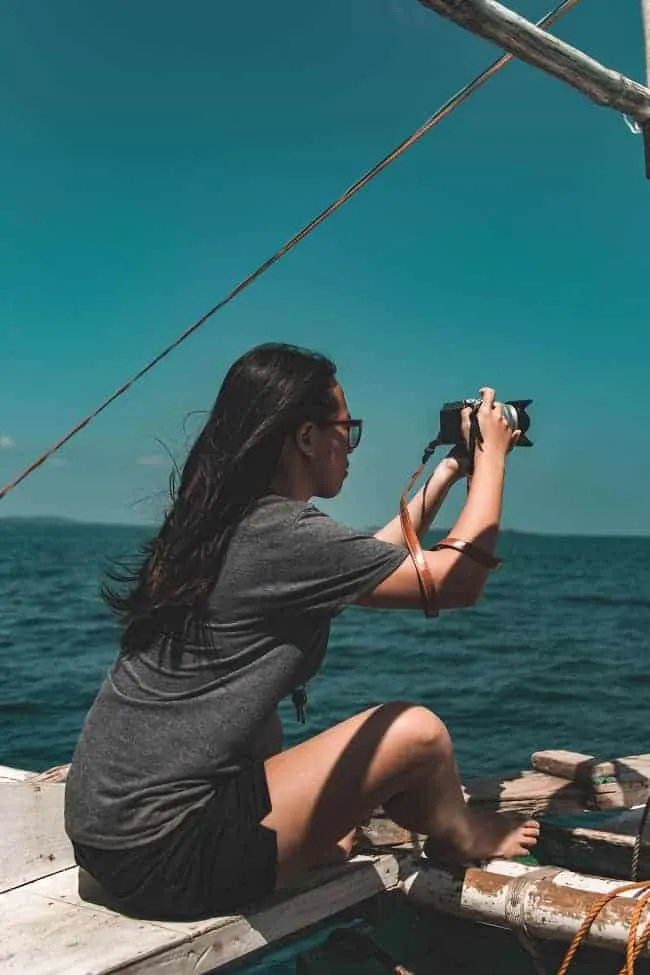
Cameras
If I could do my trip over again, I would invest my electronics budget in the best camera phone I could afford.
While we carried a DSLR, it was clunky, I was paranoid about damaging it and as a result, I didn’t carry it all the time which meant many missed photos.
While mirrorless cameras are smaller and more compact, they are still not as easy to throw in your bag as a camera phone. Unless you are a serious photographer, don’t bring a DSLR or mirrorless camera.
You may say to yourself, “But I’ll have time to learn my camera on the boat”.
As someone once told me, “You won’t become a different person when you go cruising – if you didn’t practice photography at home, you’re not going to on a boat.”
I found this to be quite true. Sailing is such an exciting and all-consuming experience, that unless you’re ultra committed, it’s unlikely you’ll take up new hobbies.
What about Go Pros on boats?
Sure, if you’re an avid diver of snorkeler, this may be useful. They also don’t take up a lot of space.
We had one and used it occasionally, but I still think that money would be better invested in a good camera phone and underwater case.
Laptops, Tablets, Phones
Go as small as you can. If you can get by with a smartphone – do that. If you need a tablet because you have poor eyesight, then bring your iPad.
Unless you’re going on a bareboat charter, or own your own boat, or are working as you travel, you likely don’t need to bring a laptop.
Buy protective water-resistant (ideally waterproof) cases for all of your electronics.
Load up your device with all of the necessary sailing apps before you go.
Even if you don’t carry a computer, it can be helpful to have a USB stick for taking photos from a friend you meet cruising or storing copies of key documents.
Headphones
Wireless headphones make life simpler on a boat where it’s easy to get wires hooked up or tangled.
Don’t spend a lot of money on these as they’re likely to corrode.
These headphones are magnetic and clip around your neck when not in use.
Chargers and batteries
Universal travel adapter
Ask the captain what type of outlets the boat has and bring a universal travel adapter. Don’t assume – a U.K. flagged boat may have North American outlets.
12V DC USB Charger
Most boats will have 12V DC plugs in addition to 110V or 220V electrical outlets. A cigarette lighter USB charger will allow you to charge your devices on any 12 V DC plugs.
A portable charger
A portable charger is very handy because you can charge them when there is excess of power (e.g. the engine is running or the solar panels are going full blast) and then use them to charge up your device overnight without depleting the ship’s house bank.
Spare batteries
Bring spare batteries for headlamps and any other electronic devices you may use.
Satellite communication
If you’re going sailing for more than a few weeks you may want a personal satellite communication device, rather than using the boat’s satellite phone (which can get very expensive).
A Garmin InReach is the more compact option and offers text and tracking while at sea.
An Iridium Go is a bit bigger but comes packed with more features (text, e-mail, GRIB file download). Naturally, the Iridium Go costs more upfront and the plans are more expensive.

Exercise and entertainment (fun things to take sailing)
Water sports gear
Goggles, snorkel, fins
Sailing gives you access to some of the most stunning diving and snorkeling in the world. If you plan on playing in the water regularly, it is well worth investing in a good pair of goggles and snorkel.
There is nothing more annoying than missing out on a spectacular underwater display because you’re wearing a leaky mask.
If you wear prescription glasses you may want to look into getting prescription goggles (or bring your contact lenses).
Some people choose to carry travel fins, but if you’re tight on space you can often rent them in popular cruising grounds.
Wet suit or thermal protection
If you tend to get cold in the water (as I do after 20 minutes of snorkeling), you may want to consider bringing a 2 mm shorty wetsuit.
Alternatively, there’s a new technology called Exowear, which is a neutrally buoyant, lightweight exposure protection garment for water sports like diving, paddle boarding, and kayaking which is more compact than a traditional neoprene wetsuit.

If you’re avid swimmer, you may find this a great form of exercise while on the boat. Be cautious of traffic and pack a high-vis swim cap or float.
Hiking & jogging
Pack a pair of athletic footwear if you plan on running or hiking. In my experience cruising the Caribbean and the South Pacific, good hiking trails are few and far between.
However, the handful of trails that do exist are absolutely spectacular and not to be missed.
In many cases you can get away with a hiking sandal, but a light pair of runners is nice to have if you can make space. Also, jogging is probably one of the easier ways to exercise while you’re sailing.
Exercise bands, TRX, Yoga
As far as bringing exercise equipment goes, consider the space on board and the people you’ll be sharing that space with.
If you’re in tight quarters with other crew, it may not be appropriate to take up the whole cockpit while you do your full-blown TRX or Yoga workout.
Resistance training bands take up less space in your bag and are easier to use in a confined space.
Entertainment
Books
Download books to your phone or tablet. I would only pack an e-reader if you plan on reading more than a book a week. Alternatively, pack a couple of paper copies to read and trade with other sailors as you go. Here’s a list of our 25 favorite sailing books for inspiration.
Games
A deck of cards is about as compact as games get.
Hobbies and capturing your journey
If you’re a photographer – bring a great camera, a writer – a great notebook, a painter – a great watercolor set. Capturing your journey is an important part of the experience and it’s worthwhile investing in the right tools.
If you’re thinking you might like to get into a new hobby, consider taking a class before you go sailing to ensure it really is a good fit for you (lest you end up lugging around a bunch of gear that you never use).
Music
Many sailors play music, and it’s common for boats to host jam sessions in an anchorage.
There are some really great options for collapsible and fiberglass instruments like this collapsible carbon fiber guitar from Journey Instruments that my mom bought for her trip.
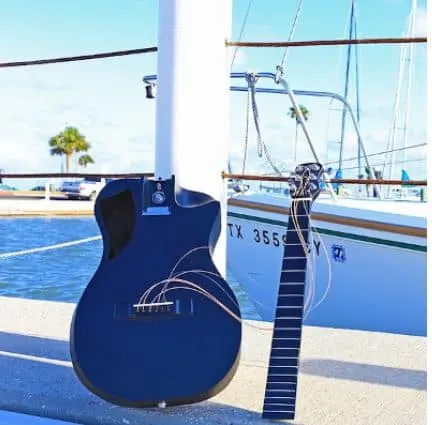
Photo credit: Journey Instruments
Gifts
One of the best parts of travel is meeting new people. Often, you’ll want to give a boating gift to a fellow cruiser or thank a local for their hospitality. Many cruisers pack flags, coloring sets, pins, stickers, and tattoos to give to local children.
While it may be tempting to fill your basket with gifts at the dollar store, consider that many communities have to ship their garbage off the island and don’t have recycling programs.
Consider the environmental impact of any gifts you bring with you.
Contact cruisers who have recently sailed in the ports you’ll be visiting (try any of the cruising Facebook groups if you don’t know someone) to ask what would be the most useful gifts to bring.
When we were sailing through the South Pacific, popular and practical gifts for adults included reading glasses, a set of guitar or ukulele strings, and LED lights.
We carried a roll of LED light strip and snipped off lengths to give as gifts.
We met cruising kids who gave colorful strings to local kids their age and taught them how to play cat’s cradle. Friendship bracelets also seemed to be popular for older kids.
Bags are packed, you’re ready to go!
While it took a few iterations, we eventually managed to fit everything into my mom’s duffel bag (except for the guitar!), which is pretty cool when you consider she’s planning on sailing for several months.
If you can think of other things that should be on this list, let us know in the comments below. Good luck with your sailing adventure!
Offshore sailing packing list
All quantities are 1 unless otherwise marked in brackets.
Note this is a list of ideas – not all items are required.
This list can be used as a coastal cruising, sailing vacation packing list, just disregard the offshore items marked with an asterisk.
Paperwork
- Passport (and photocopy)
- Secondary photo ID
- PADI or NAUI diver card
- Sailing certifications, memberships, licenses
- Travel Insurance
- Health Insurance
- Cash & credit cards
Bags
- Duffel bag 100-150 L
- Day bag 20-30 L
- Dry bags (2)
- Mesh clothing organizers and/or laundry bag
Sailing & personal protective equipment
- PFD and spare re-arm kit
- Harness*
- Tether*
- Whistle
- Sailing knife
- Safety light
- Yellow swim cap
- Personal Locator Beacon (PLB)*
Foul weather gear
- Waterproof, foul-weather light jacket and pants or float suit
- Base layer set
- Beanie
- Buff
- Sailing gloves
- Warm socks (2)
- Deck boots
Headlamp and spare batteries
- Water bottle
- Polarized sunglasses with tethers (2)
- Protective sun hats with ties (2)
- Waterproof wristwatch
Medication
- Any personal medication
- Seasickness medication
- Advil/Tylenol
- Allergy medication
- Band-aids
- Polysporin
- Bug repellant
- Tweezers
- First Aid Kit
- Vitamins
Clothing
- Quick-dry shorts (2)
- Tops (3-5)
- Long-sleeve sun-protective shirt
- Lightweight pants
- Fleece sweater
- Bathing suits (2-3)
- Quick-dry underwear (5-7)
- Pairs of socks (2)
- Going-out-for-dinner outfits (2)
- Inexpensive stainless jewelry
- Non-marking waterproof sandals (2 at least one should have toe-protection and ankle straps)
- Bar of laundry soap (for handwashing)
Grooming
- Electric shaver
- Straightening or curling iron (no blow dryer)
- Sunscreen
- SPF Lip balm
- Soap
- Deodorant
- Toothbrush & toothpaste
- Hairbrush, elastics, clips
- Shampoo, conditioner, hair care products
- Nail clipper
- Make-up
Sleepwear
- Pajamas
- Linens, sleeping bag, pillow
- Ear plugs
- Eye-mask
- Melatonin (for jet lag)
Electronics
- Camera phone
- Protective cases for electronics
- Small, Bluetooth headphones
- Spare batteries
- Universal travel adaptor
- Iridium Go or Garmin InReach*
- 12V DC USB charger
- USB stick 8+ GB
Exercise and entertainment (just for fun)
- Mask and snorkel
- Travel fins
- High-vis swim cap
- Running shoes
- Exercise bands
- Books, journal, painting set, a deck of cards
- Musical instrument
- Gifts for people you meet along the way
Fiona McGlynn is an award-winning boating writer who created Waterborne as a place to learn about living aboard and traveling the world by sailboat. She has written for boating magazines including BoatUS, SAIL, Cruising World, and Good Old Boat. She’s also a contributing editor at Good Old Boat and BoatUS Magazine. In 2017, Fiona and her husband completed a 3-year, 13,000-mile voyage from Vancouver to Mexico to Australia on their 35-foot sailboat.


